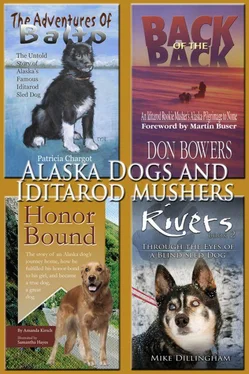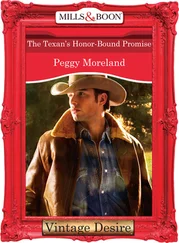After the fluffy deluge eventually quit, I was able to unlimber my snowblower to clear my own 300-foot driveway, but Ron’s stayed blocked for a week. It took two days with a front-end loader to get his opened up and in the process his phone line was cut and we couldn’t repair it.
The snow we’d been hoping for ended up cutting our training drastically. We were up to daily 30-mile runs before the heavy snows and were actually ahead of the power curve for the Iditarod. However, limited strictly to the plowed local roads and the sporadically groomed Montana Creek Dog Mushers Association 10-mile track, we were lucky to get 15 or 20 miles every few days.
Then the snow was followed by a 40-below cold snap. While we’ll certainly hit comparable temperatures out on the trail, we didn’t see any point in intentionally risking the dogs in extreme cold weather without a good reason. The dogs can handle it just fine when the time comes for real, but it’s not good training at this stage of the game. We made a policy of not running the dogs unless the temperature was above 25 below — still plenty cold.
I spent so much time outside during the cold snap trying to get things cleared I came down with a vicious cold. Monday and Tuesday before Thanksgiving, Anchorage schools were closed because of more heavy snow and my student teaching was on hold; I felt so bad I just stayed in bed. Wednesday the schools were open and I went in to teach my kids. My host teacher repeatedly warned me I looked like I should have stayed in bed, and after school I finally headed over to the hospital emergency room to see if they knew something I didn’t.
The physician on duty took one good look at me, sent me down for a quick chest X-ray, and the next thing I knew I was laid out on a bed with IVs in my arms and a breathing mask over my face. Pneumonia, she said, with a temperature of 102 degrees, spiking as high as 105. Some cold, I thought. After six hours of medical ministrations, the doctor said I could go home as long as I took it easy for several days. She prescribed a new antibiotic that only required six pills over five days to knock out just about anything, and sure enough it worked like magic, deep-sixing my fever within a few hours.
I spent Thanksgiving in bed recuperating, but I couldn’t stay away from my dogs. I felt well enough to take them 30 miles yesterday (Sunday) and both they and I came through with no apparent ill effects. On the way back to Anchorage late last night, though, I smacked a 1,200-pound moose at 50 miles an hour after it darted out from a huge snow berm. My minivan was virtually totaled, but its sturdy construction — and the seat belt — protected me from suffering even a scratch. The moose wasn’t as lucky and the state trooper had to dispatch it. All of the meat went to charity, although I had a passing regret I couldn’t even keep a hindquarter for my trouble.
It took me three hours to nurse my battered and windowless but still drivable vehicle back to town, with great clumps of moose hair and oceans of broken glass filling the seats and littering the floor. When I finally limped into my driveway I was so tired I just wanted to crawl under the covers and not come out for about a month.
Now I’m about to go to bed in hopes of even a short nap because I’ve got to be back in the classroom at eight. I suppose all of this will be good practice for the trail, where I’ll have to weather equally traumatic experiences. I guess it’s just been my turn to be tested, to make sure I can “take a licking and keep on ticking” just like the dogs.

Most sleds are of two types: toboggan and basket. This is a toboggan sled, consisting of a rigid piece of plastic firmly bolted to two sturdy runners, with a handlebar braced upright at the rear. Toboggans are strong and good for deep snow, but they tend to be heavier, less flexible, and less maneuverable than basket sleds. Many Iditarod mushers start the race with toboggans and run them until they are through the sled-battering trails of the Alaska Range.
December 15, 1994
Montana Creek, Alaska
My student teaching is finally completed and I’m living full-time at Montana Creek. I’m running the dogs every day and looking forward to the racing season, which begins day after tomorrow with the Sheep Creek Lodge Christmas Classic, just a few miles down the road.
I decide to take out my “A”-team of 12 dogs this afternoon. I want to give them 30 miles and rest them tomorrow before the back-to-back 40-mile heats in the Sheep Creek race this weekend. I’m not worried about the dogs handling runs of this length; we’re back on line with our training after the heavy snows and the team is in good shape.
In fact, they’re positively jumping to go somewhere today and I intend to oblige them. First I secure the sled’s quick-release to a telephone-pole-size post and set the snow hook for insurance — I’m still awed by the brute power of 12 dogs and am not anxious to let the team do something unplanned. Then I add a couple more sections to the gangline to accommodate all the dogs and lay the harnesses out.
Harnessing and hooking up goes surprisingly quickly. The dogs are quiet until they see me put on my windbreaker and gloves, then it’s like someone turned on a master switch. They have obviously zeroed in on my habits, which include not putting on all my outerwear until the last minute to avoid overheating while I run around hooking up. They also understand hooking up a bigger team usually means an interesting run.
As I pull the snow hook and get ready with the quick release, the dogs strain into their harnesses and set up a deafening chorus of barking, yipping, and whining. The dogs who aren’t going help drive the noise to rock-band levels. There must be a formula to explain why adding dogs to a team increases the noise geometrically. Hooking up an eight-or ten-dog team is noisy, but getting ready to go with 12 or more probably exceeds OSHA standards. People who live in musher country can tell you in a heartbeat when one of their neighbors is hooking up for a run, and likely how many dogs as well.
As I let go the quick release, I stomp on the brake. It’s like trying to stop a moving freight train by dragging a stick. About the best I can manage is to slow the team down enough to keep me from being flung from the sled as we thread our way out onto the main trail.
When we hit the wide, hard, manicured Montana Creek club trail, I turn them loose. It’s like mashing the accelerator on a Trans-Am. The dogs are in full frenzy and we tear around the mercifully gentle turns at 20 miles an hour or more. The first mile goes by in just a few minutes and suddenly I realize we’ve overshot our turnoff for the 20-mile trail.
I stand on the brake and yell to Socks to stop, but he’s gone 10 yards past the turn. Without thinking I tell him to haw and he and Weasel immediately jump into the waist-deep snow and start to flounder over to the correct branch of the Y. Unfortunately, the dogs behind them don’t have to go through the deep snow. The swing dogs win the race to the new trail, resulting in a dog-ball of epic proportions.
With a sigh I set the snow hook as best I can and move up to untangle everybody. After I get the first few deciphered, Socks decides it’s time to go again and jerks the team forward. I catch the gangline just in front of the sled and hang on, shouting between mouthfuls of snow for Socks to cease and desist.
He finally slows down and I’m able to lever the sled over onto its side, which creates enough drag to convince the team to stop. I shove the hook into the too-yielding snow again and go forward to finish the untangling process.
Читать дальше













